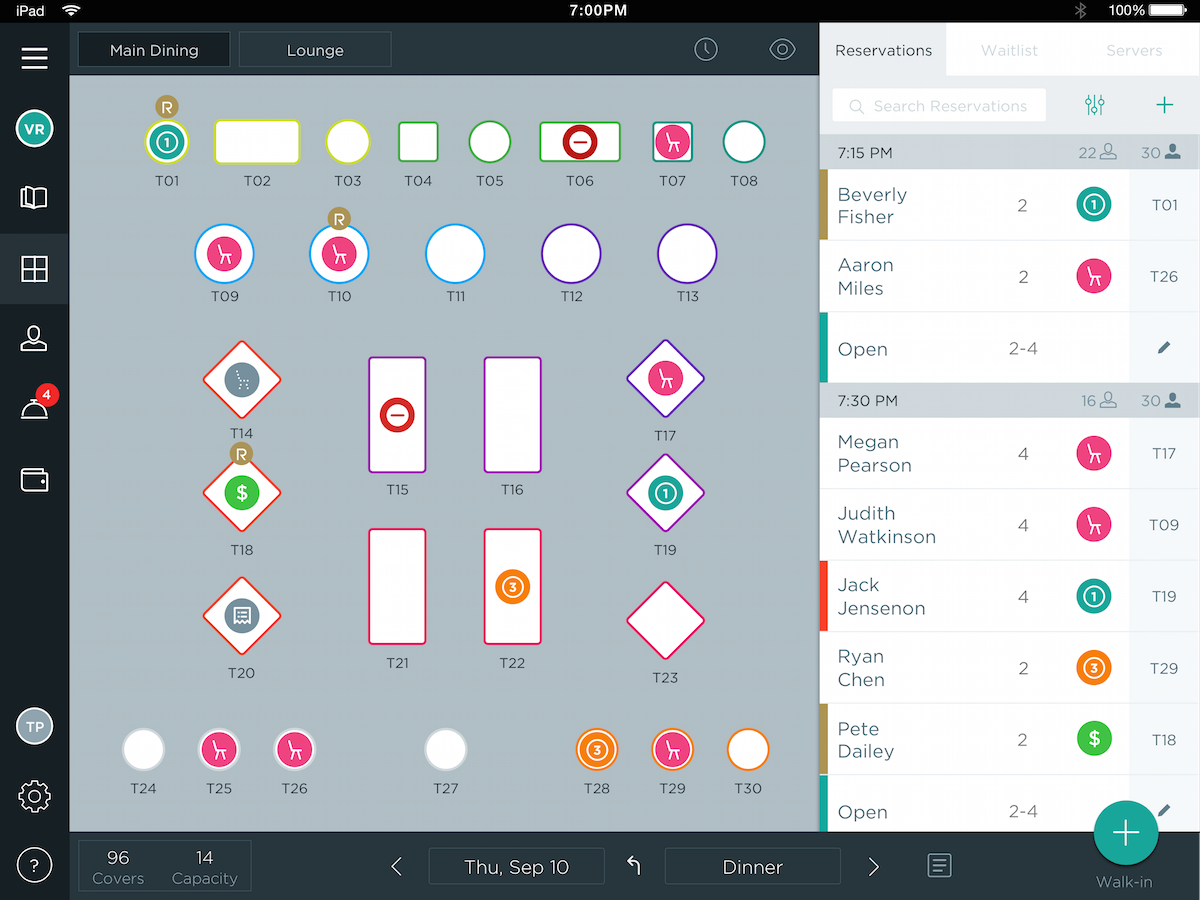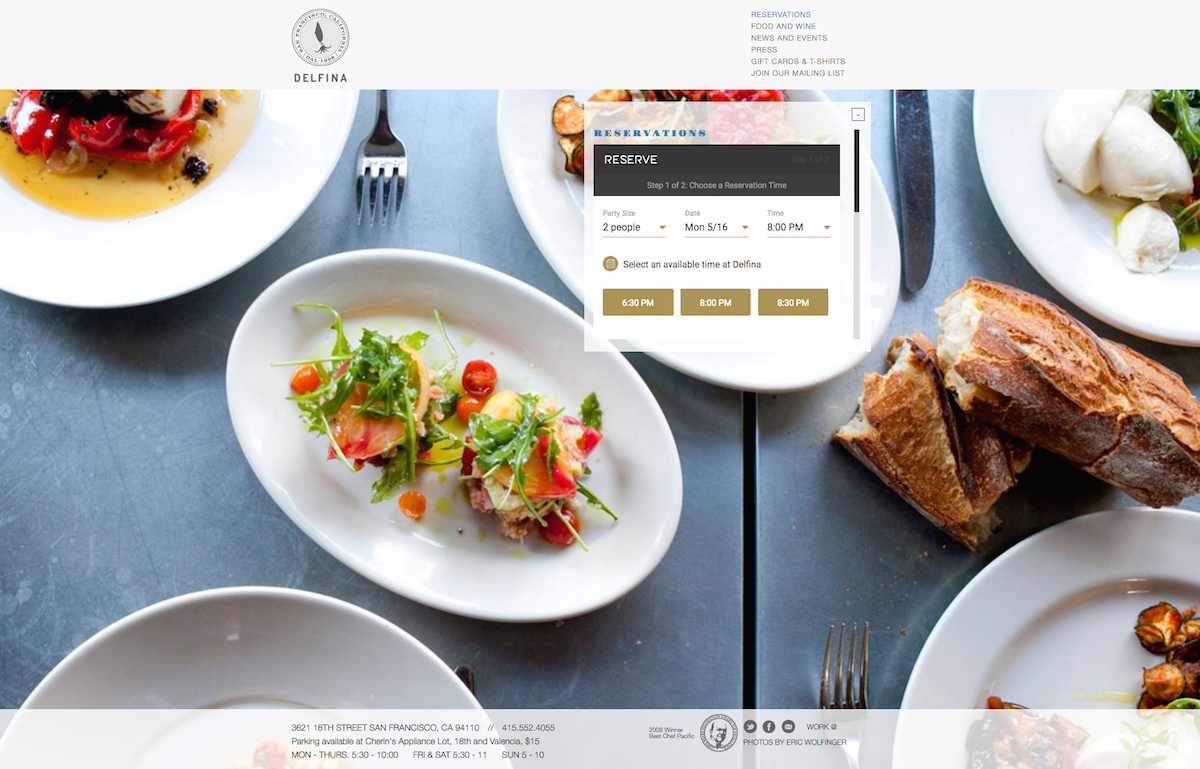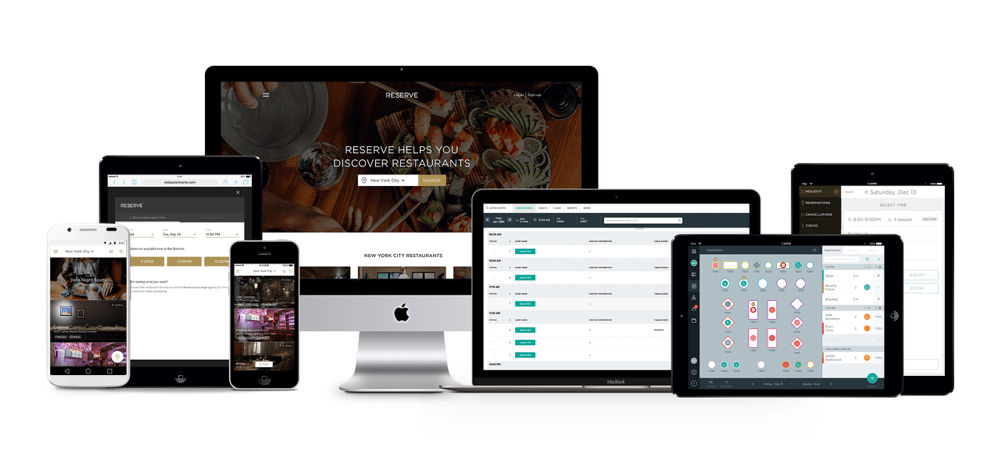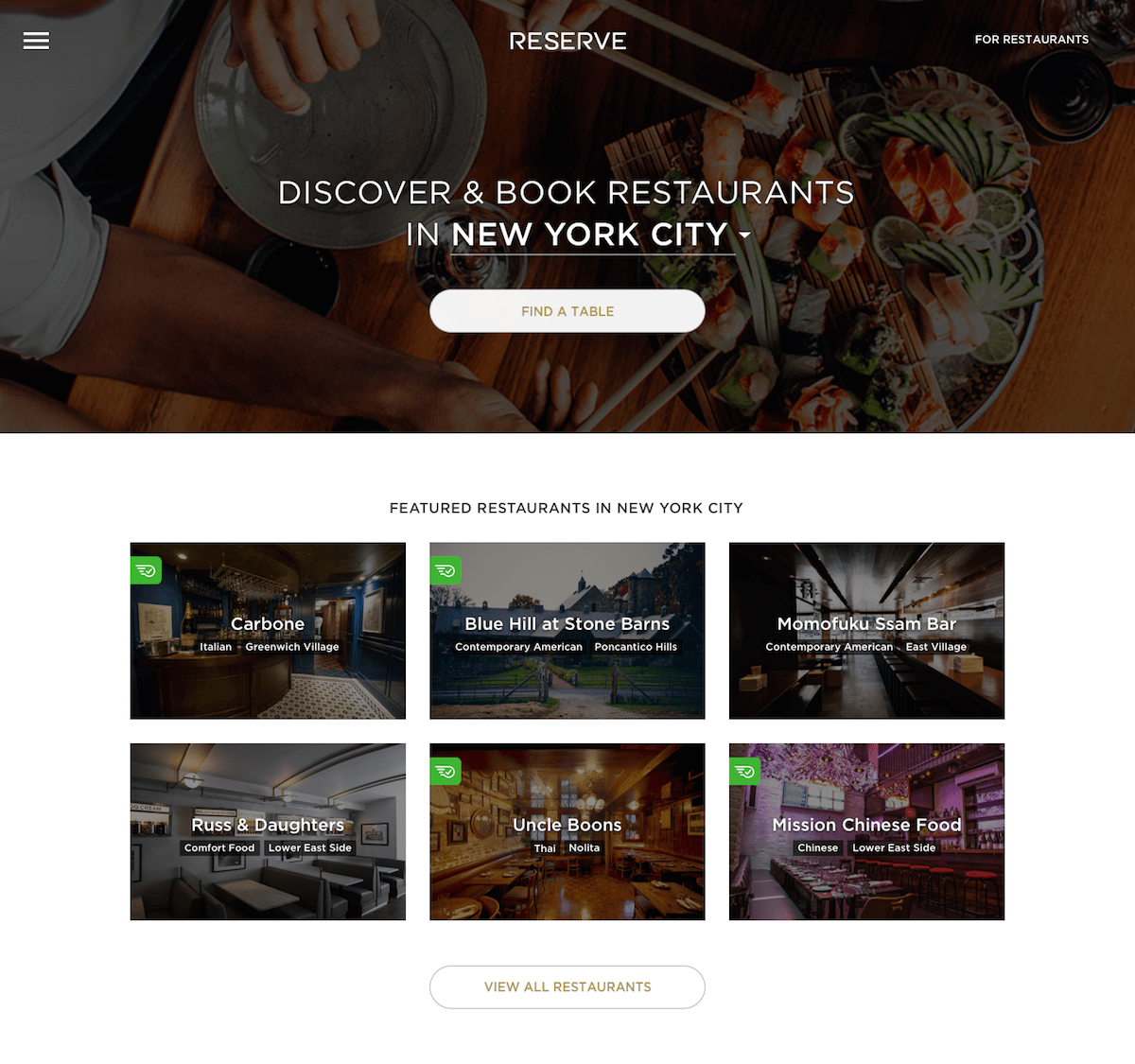Reserve thinks that the restaurant reservation process is broken, and it has doubled down on fixing it with the launch of Reserve for Restaurants. This table management system offers restauranteurs more control over key elements such as seating, scheduling reservations, and managing wait times. It even includes a customer database feature. The idea is to streamline the process so that diners receive a better experience “from start to finish.”
Reserve CEO Greg Hong explained Reserve for Restaurants as “ultimately giving control back to our restaurant partners, by aligning incentives with [them] and [providing tools] to book tables at restaurants more smartly.”
For $99 per month per location, restaurants can install a platform that appears similar to OpenTable’s, but it features some marked differences. Beyond offering wait list management, reservation capabilities, and analytics, Reserve for Restaurants does away with any additional costs — such as cover fees for reservations made through the system, a potential savings of what Reserve said could be $0.25 to $7 per person.
Peter Esmond, the company’s head of restaurant product, claimed that the food technology ecosystem is “so fragmented and not transparent for guests. The restaurant knows that their 7 o’clock and 8 o’clock tables are taken, so there’s no reason to put that inventory online to pay a fee per person. Any dollar you can save goes to the bottom line.” He believes it’s time to change how the entire ecosystem works.
AI Weekly
The must-read newsletter for AI and Big Data industry written by Khari Johnson, Kyle Wiggers, and Seth Colaner.
Included with VentureBeat Insider and VentureBeat VIP memberships.
Another distinguishing feature is its Salesforce-like capabilities, which give restaurants the ability to keep better data on their loyal and frequent diners. The information is not gathered through data that customers provide Reserve’s system directly, but through more organic means. Restaurants can track things like visit history, what table diners prefer, favorite drinks, allergies they may have, and other preferences. It’s all centered around providing a more hospitable experience for the guest.
The backbone of this customer relationship management service comes through Reserve’s acquisition of Esmond’s Set for Service last year.
While many areas of the restaurant industry have undergone innovation over the past few years, one thing that has remained stagnant is reservation systems. “No one was addressing where the void was,” Esmond said. It’s his belief that while there are plenty of OpenTable competitors, until now none offered a differential change. Both he and Hong think their new platform can really make that difference.
“It’s a matter of focus right now,” Hong remarked. “It’s about taking a user-focused approach to meet the needs of restauranteurs, something Reserve has been hyper-sensitive to.”
At launch, Reserve has kept its restaurant platform closed to third-party developers, but it does have plans to eventually open it up to integrations, allowing restaurants to sync up data across different technology platforms (perhaps including Square’s point-of-sale system). Hong cautioned that this’ll take some time because he “wants to be sure that we’re sharing data in a thoughtful way” while also “maintaining the privacy of diners in the restaurant, as well.”
Although there’s a network of 500 restaurants across the U.S. currently using a Reserve product, only 150 have implemented Reserve for Restaurants. The company’s “digital concierge” option is still available, meaning that restaurants aren’t forced to use Reserve’s platform.
To open up more opportunities to book reservations, the company has also launched a new consumer-facing website for the desktop. It allows you to book a table at almost any of the 500 participating restaurants. However, Hong said that the mobile payment capability isn’t available yet and attributed the delay to technical constraints that are being resolved.
This means is that once you’ve finished your meal, the waiter will bring your check, whereas if you arrange the reservation through Reserve’s mobile app, the payment is processed within the app itself. We’re told that over time, the web interface and mobile app will start to be more on par with each other. Additionally, the company plans to add more Instant Booking availability to its service, as well as growing the number of restaurants on its platform.
The consumer website is aimed at those who prefer to browse for restaurants right on their desktop with a larger screen. Reserve said that it’ll provide a better experience to users interested in learning about venues, seeing food photos, and more. “It makes it easier to go out and book your dining reservations,” Hong explained.
Reserve for Restaurants and the company’s consumer website are both part of an effort to establish what Hong called a “united platform.” He shared that “from day one, the idea was to build out an ecosystem, taking care of a diner from when they were hungry to the end of the meal where they’d provide feedback.” Since its incubation through startup studio Expa, Reserve has been consumer-facing, but now it’s expanding its focus to “connect the pipes on the restaurant side more completely.”
VentureBeat's mission is to be a digital town square for technical decision-makers to gain knowledge about transformative enterprise technology and transact. Learn More




